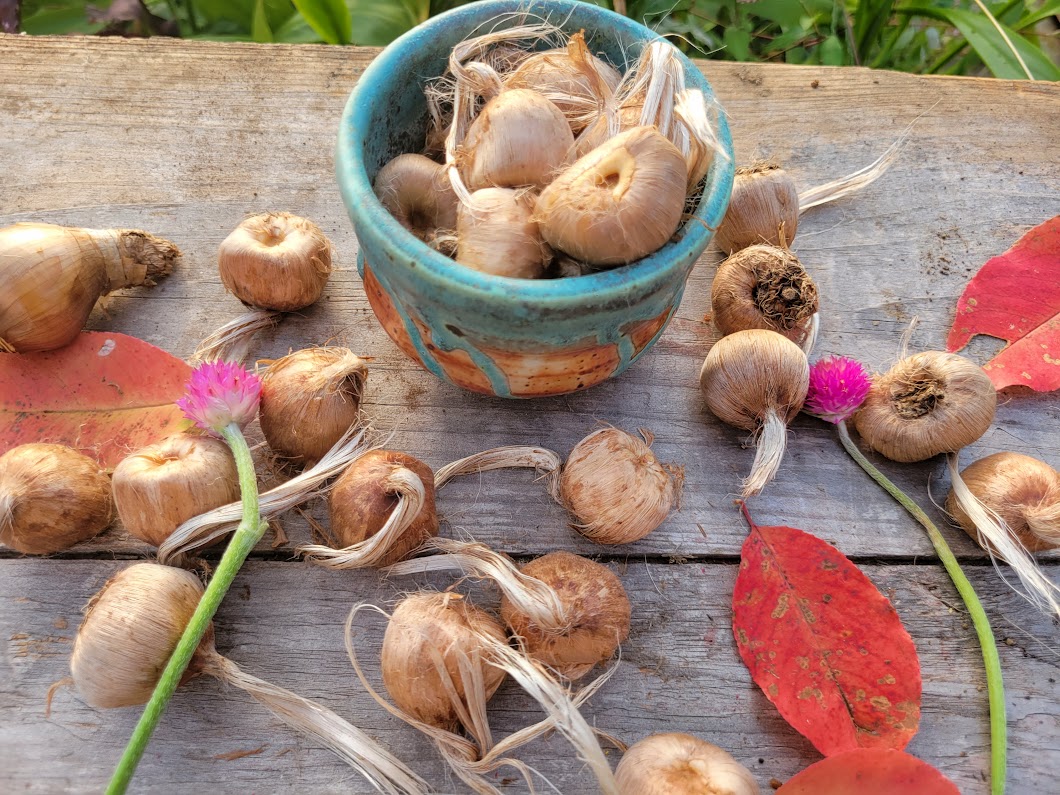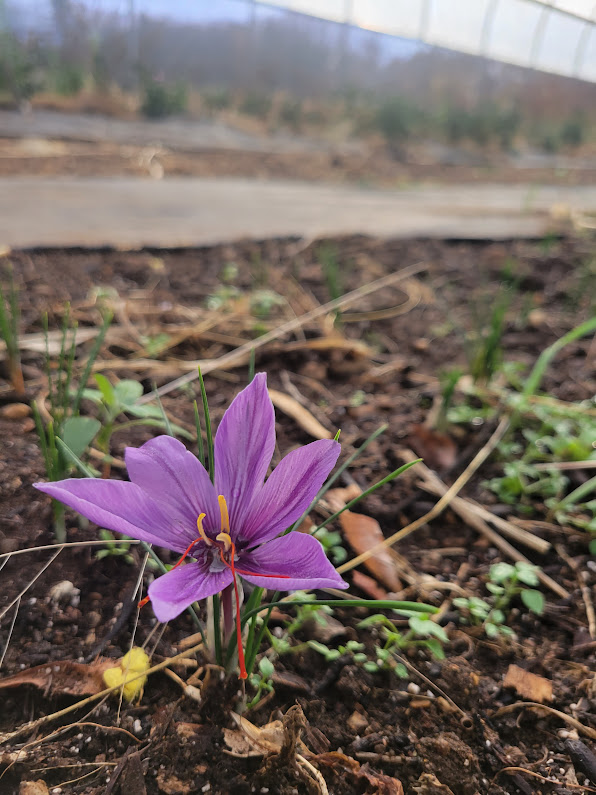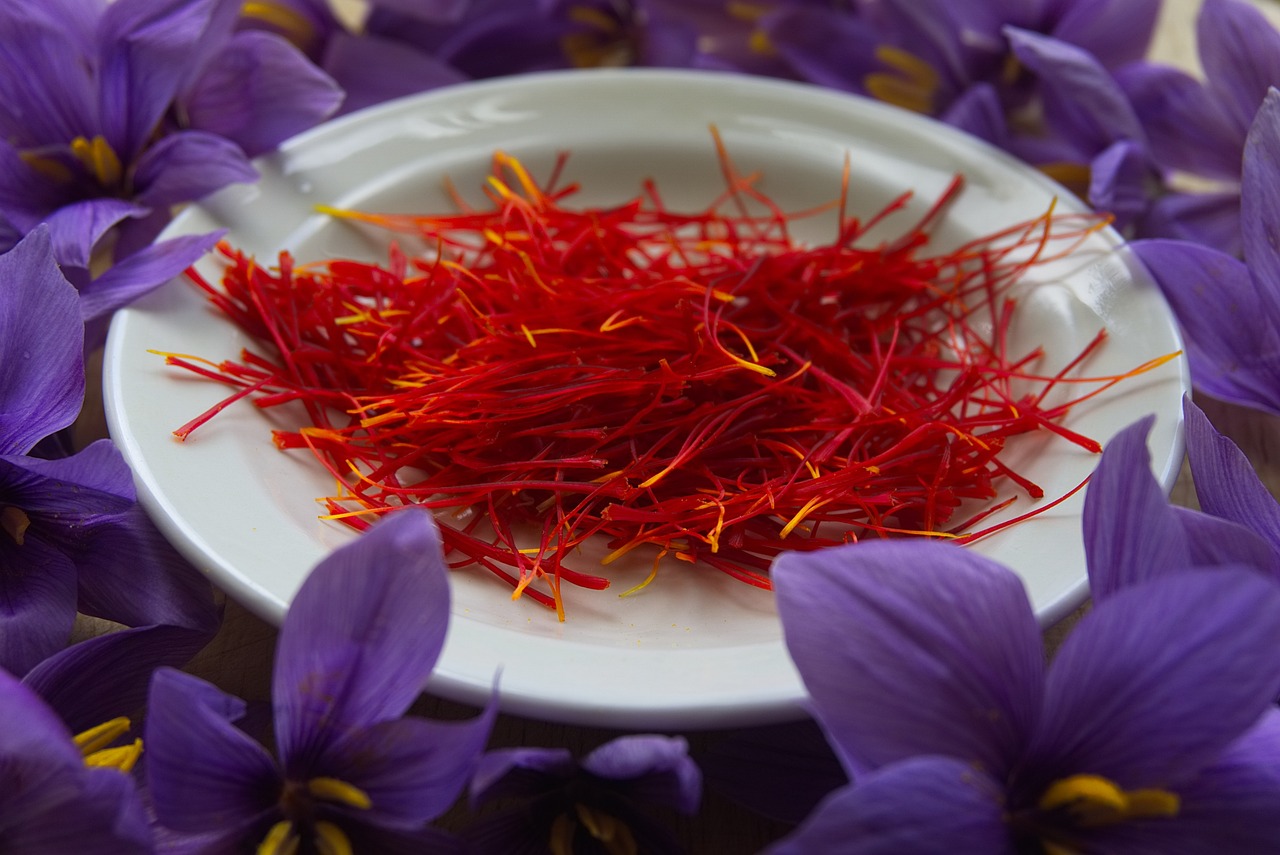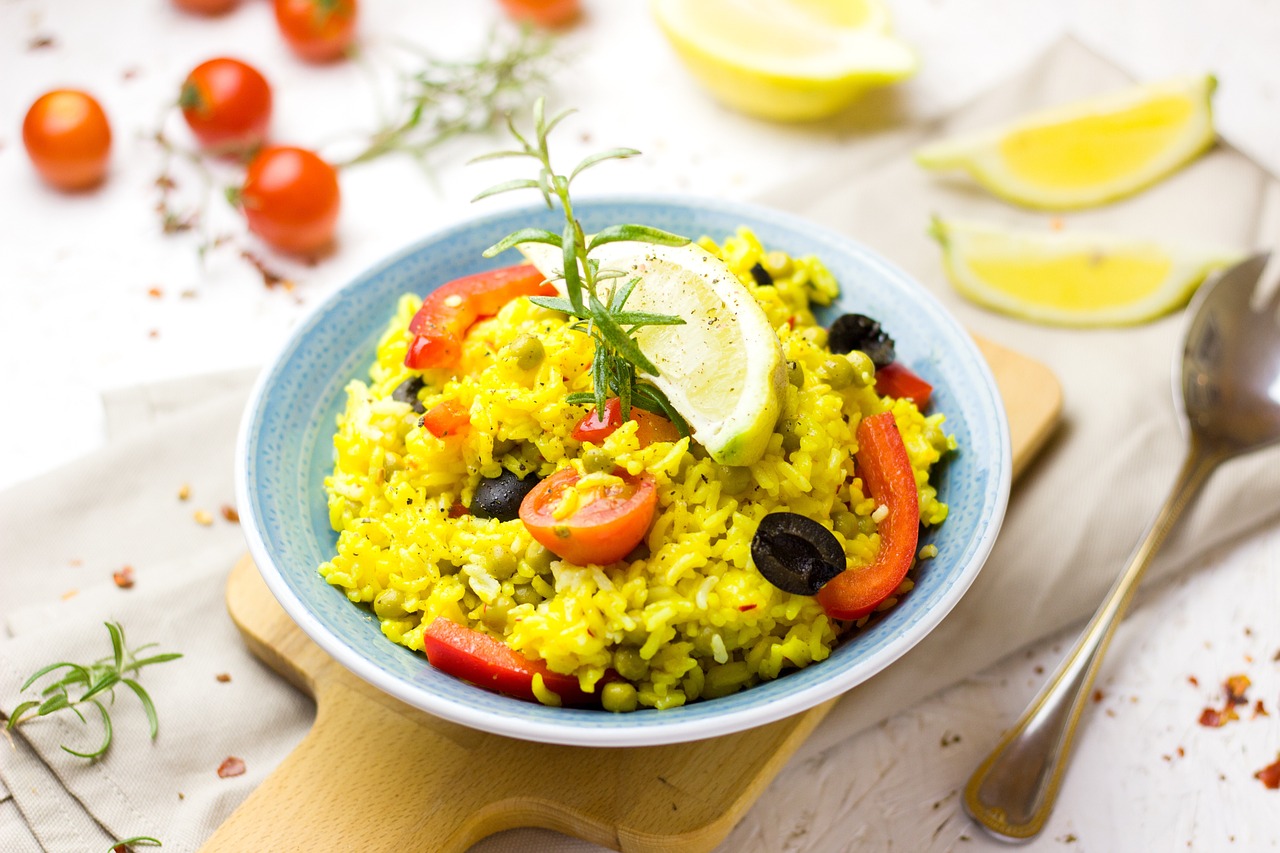Saffron are autumn-blooming purple flowers which offer up a heaping mound of fragrant, delicious seasoning. It’s the most expensive spice in the world! Plant this hardy, quick-growing corm in early spring or fall—and harvest your own saffron!
Growing Saffron: The Most Expensive Spice in the World
Sipping my Saffron-infused tea while I take in the sight of the white snow falling outside the window, I’m reflecting on this year’s last trial of the season. We grew a small patch of Saffron, Crocus sativus, in the high tunnel to see how it might do in our cool fall climate. What we found was success!
Crocus grow rather quickly and, by planting in early fall, we were able to harvest the Saffron flower in about 5 to 6 weeks allowing us to take advantage of what is generally a no-grow time in the unheated tunnel. Save for hardy chrysanthemums and a few other cool-loving flowers, the crocus proved to fit right into the gap between between late summer blooms and the inevitable winter freeze for a quick and easy, joyful fall bloom that offers up a heaping mound of fragrant, delicious seasoning!
Why Grow Saffron?
Crocus sativus is a versatile, hardy, quick-growing corm that forms an eye-catching purple bloom. Not to be confused with another common and popular autumn crocus, Colchicum autumnale, while similar in appearance is not edible and considered highly toxic.
The Saffron crocus however, is gracefully striped with dark purple line patterns holding three fragrant, reddish-orange stigma and three mustard colored stamen, centrally located. It is these three bright stigmas that are the coveted source of the royal spice, Saffron.
These expensive stigmas have been known to cost more than gold at times throughout history, giving rise to its nickname as the most expensive spice in the world. Another reason for that high price is the labor involved in production. Growing Saffron on a large scale is incredibly labor intensive since the harvest window is 1 to 2 weeks per year and the picking of the bloom and removal of the three stigmas per flower is all done by hand. It takes about 75,000 blooms to produce 1 pound of Saffron! 
Where Does Saffron Grow?
The dried spice of the saffron crocus has been largely grown and sourced from Iran for over 1,000 years with its origins tracing back to the wild sourced, Crocus cartwrightianus in the Attica province of Greece and cultivated for at least 3,500 years. Crocus sativus is known to be perennial in zones 6 to 8 and treated as an annual in the lower zones.
Here in New Hampshire, we are growing in zone 5b and knew we might be pushing the boundary just a bit! We planted our Crocus in the high-tunnel this year, and after harvesting we covered with leaves and straw to create a nice layer of insulation to experiment and see if they will indeed overwinter and gift us with more corms next season. Generally, plant the corms either in early spring or fall, at least 6 weeks before your first frost.
Originating in the Mediterranean, the corm, or growing organ, is well adapted to a hot, arid climate surviving high and dry summer temperatures yet also requiring mildly cold winter temperatures to flower and produce the sought-after stigma. When treated as a perennial, the corms are left in the ground for at least a few years for the mother corm to produce secondary corms, following a dormancy period throughout the winter. Well drained soil is essential so that the corms don’t rot. The corms will grow and multiply over that time, essentially expanding your initial investment and harvest each year that they grow and produce.

Saffron Planting Requirements
- Soil: According to research through the University of Vermont and the North American Center for Saffron Research and Development, trials done on site preferred soils with a light to moderate texture and healthy doses of organic matter to increase saffron yield and the weight of secondary corms. Our soil fit that descripition quite well and we added in a layer of compost to the trench for added nutrients.
- Depth: We planted our Saffron about 6 to 8 inches deep in long trenches and spaced the corms about 5 to 6 inches apart. Place in the trench with the strands of white hairy roots facing down and the tip pointing up.
- Water: After setting into the trench, water in place, cover with soil and be sure to mark where you have planted them. I have too many times relied on memory to source my plantings and then spent way too much time trying to decide if a particular green growth is actually a weed or a plant. Always label!

Harvesting, Drying and Uses for Saffron
After about 5 weeks, we began to see the first sproutlings of green pushing through the soil in search of sunlight. The following weeks consisted of the whole bed of corms coming into a quick succession of bloom followed up with daily flower pickings. Once home with the fragile blooms, we carefully pulled out the three red-orange stigma from each flower and prepared to dry them.
There are several drying methods in use, and each has its own merits. Throughout various parts of the world, suppliers use sun drying, air drying, dehydration and drying over a gas stove to maximize the culinary or medicinal compounds they want to highlight.
For our informal trial, what we found worked best for us given the small amount of saffron threads we were drying over a couple weeks period was to place them in a toaster oven on the lowest setting possible, not to exceed 170 F degrees for no more than 20 to 25 minutes. When dry, allow the threads to cool and place in a glass container. Store in a dark spot to preserve the volatile compounds that give Saffron its color and flavorful flair. Alternately you could also air-dry your threads on a paper towel in a dry and warm space for a few days and then store away. Either way, you will have fragrant and colorful Saffron threads ready to add fragrance and taste to whatever you choose to cook with.

Saffron can be used to add flavor and fragrance to many classic culinary dishes such as the Spanish dish Paella, the French soup Bouillabaisse, and even Swedish Saffron buns! While I’ve enjoyed my Saffron tea, I’m still waiting for just the right time to scent the kitchen with the heavenly fragrance of our homegrown saffron and flavor up a worthy dish! Happy growing and eating!
To learn more about Saffron visit: Saffron: It’s An Exotic Spice Worth Its Weight














